On a run with light and shifty wind, a masthead wind indicator is essential. The telltales on the shrouds are too affected by the sails to tell you what’s going on.
Sailing Anarchy Forum
I do not like them because they really help your competition more than you.
Sailing Anarchy Forum
Our coach, Dave Ullman, insisted that we get one and use it.
Roble-Shea Sailing
A masthead wind indicator, sometimes called a masthead fly or a Windex (brand name), is a wind vane mounted at the top of the mast. Like shroud telltales, it tells you the direction of the apparent wind, which is a crucial cue for many aspects of sailing. See our post Ten Ways to Use Shroud Telltales for all the ways you can use shroud telltales (or a wind vane).
If you have shroud telltales, should you also use a masthead wind indicator? Sailors’ opinions vary, and a recent walk through the local boat park showed about 60% of boats with them (much higher % for the Flying Scots). Here we list the pros and cons.
Masthead wind indicator – Pros
#1. More Precise than Shroud Telltales Downwind
When sailing downwind, a wind vane is a more precise indicator of apparent wind direction than shroud telltales, which are affected by flow off the sails. To see this, try a boat that has a wind vane. Sail downwind and adjust your heading so the wind vane points directly along the fore and aft axis of the mast. This indicates you are sailing dead downwind. At this heading, the difference in angle between shroud telltales and a wind vane can be as much as ten degrees. Knowing this allows you to sail dead downwind in breeze and thus sail less distance.
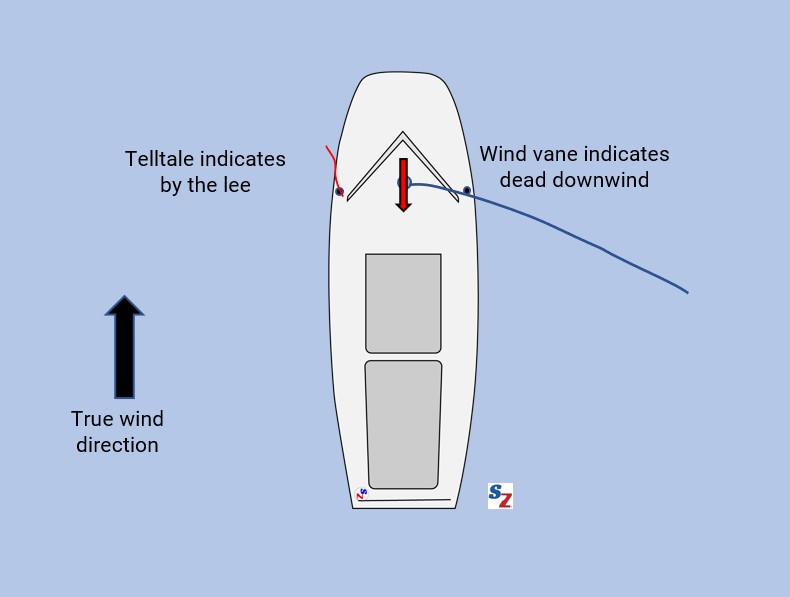
#2. Less Bouncy than Shroud Telltales
Being rigid, center mounted, and slightly heavier, a wind vane bounces around less than shroud telltales. In some cases, discussed below, it’s worth looking up to take advantage of this “noise reduction.”
#3. Better than Shroud Telltales for Some Situations
Attack and defend downwind
It’s easier to use the wind vane here, due to its accuracy, stability, and unobstructed view. To attack, point the tail of the wind vane at competitors ahead. Defend by repositioning when the arrowhead of the wind vane is pointing at competitors behind you.
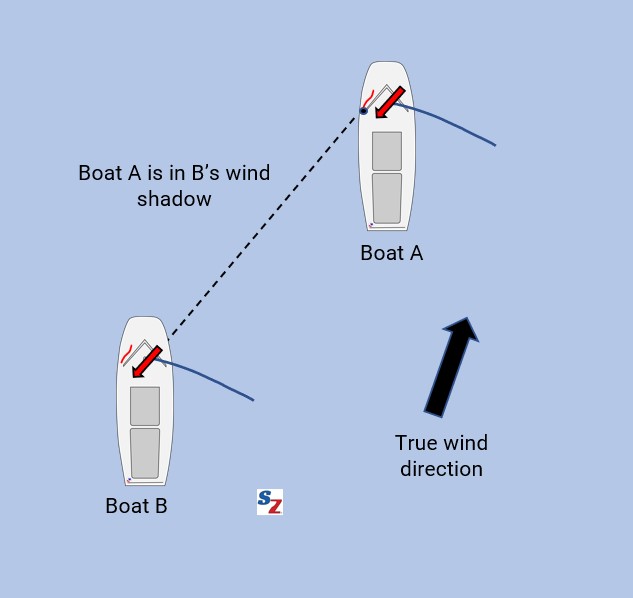
Identify layline downwind
The fastest way to the leeward mark is to keep sailing your best VMG angle until you reach the layline, then gybe and sail the same VMG angle to the mark. How do you identify the layline? Again the accuracy and unobstructed view make the wind vane more useful in this case. You reach the layline when the tail of your wind vane points to the leeward mark.
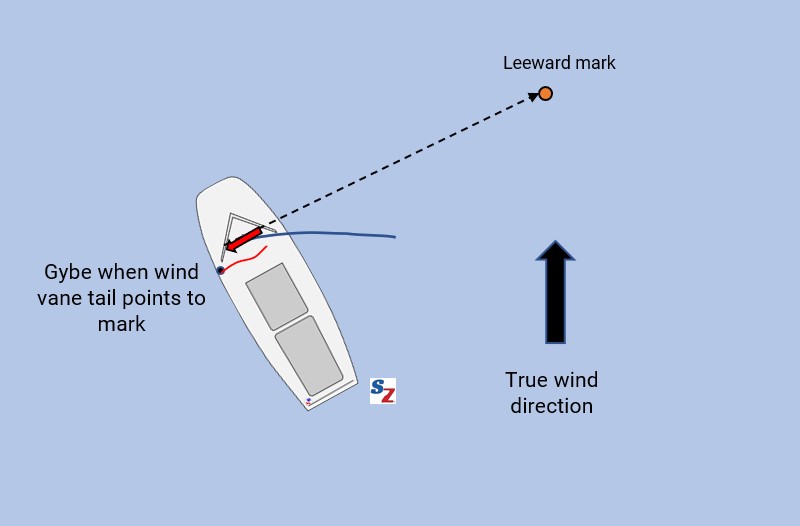
Identify true wind direction when sailing downwind
If you use a compass, you have to know the numbers. We all know how to identify the true wind direction by luffing head to wind. The accuracy of the wind vane allows you find the true wind direction when sailing downwind. Sail dead downwind, with the wind indicator lined up with the fore and aft axis. Check your compass heading and add or subtract 180 degrees to find the true wind direction.
This helps keep tabs on the “numbers” during the pre-race routine or on a downwind leg when you suspect the wind has shifted permanently.
Identify wind shear to aid sail trim
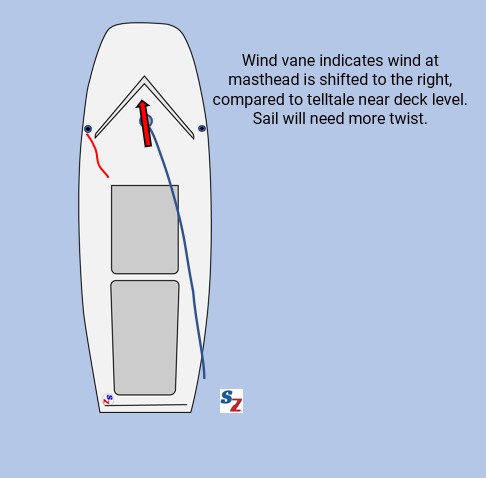
In very light air (no ripples), the wind true direction at the top of the mast may be different than near the bottom. This is important for upwind sail trim. Check your wind vane against the shroud telltales. If there’s shear or gradient, adjust your sail trim and twist as necessary. For more, see our post Wind Shear and Gradient Effects on Trim & Strategy.
Masthead wind indicator – Cons
#1. One more item to distract your focus
Distractions take away your focus from the really important stuff, and many top sailors try to keep things simple. Wind vanes are another bright, shiny object to distract you, and worse, you must look way up to see them. Shroud telltales are in your line of sight and give you the same information. You can learn to compensate for their inaccuracies downwind.
#2. May give your competitor an advantage
Your masthead wind indicator is useful for competitors. They don’t need one – all they have to do is look at your indicator to determine if they are in your bad air or vice versa.
The Verdict?
Do the pros outweigh the cons? Your editor is always tempted to go for more indicators (shroud telltales, sail telltales, marks on control lines, etc.), but that approach has added lots of distractions and thus has not always served him well. Therefore, we decline to make a recommendation, except to say that used judiciously, we have found them helpful in the situations discussed above.
Related Content
Davis Windex 3120 – Amazon
Downwind Strategy: Use Apparent Wind Cues

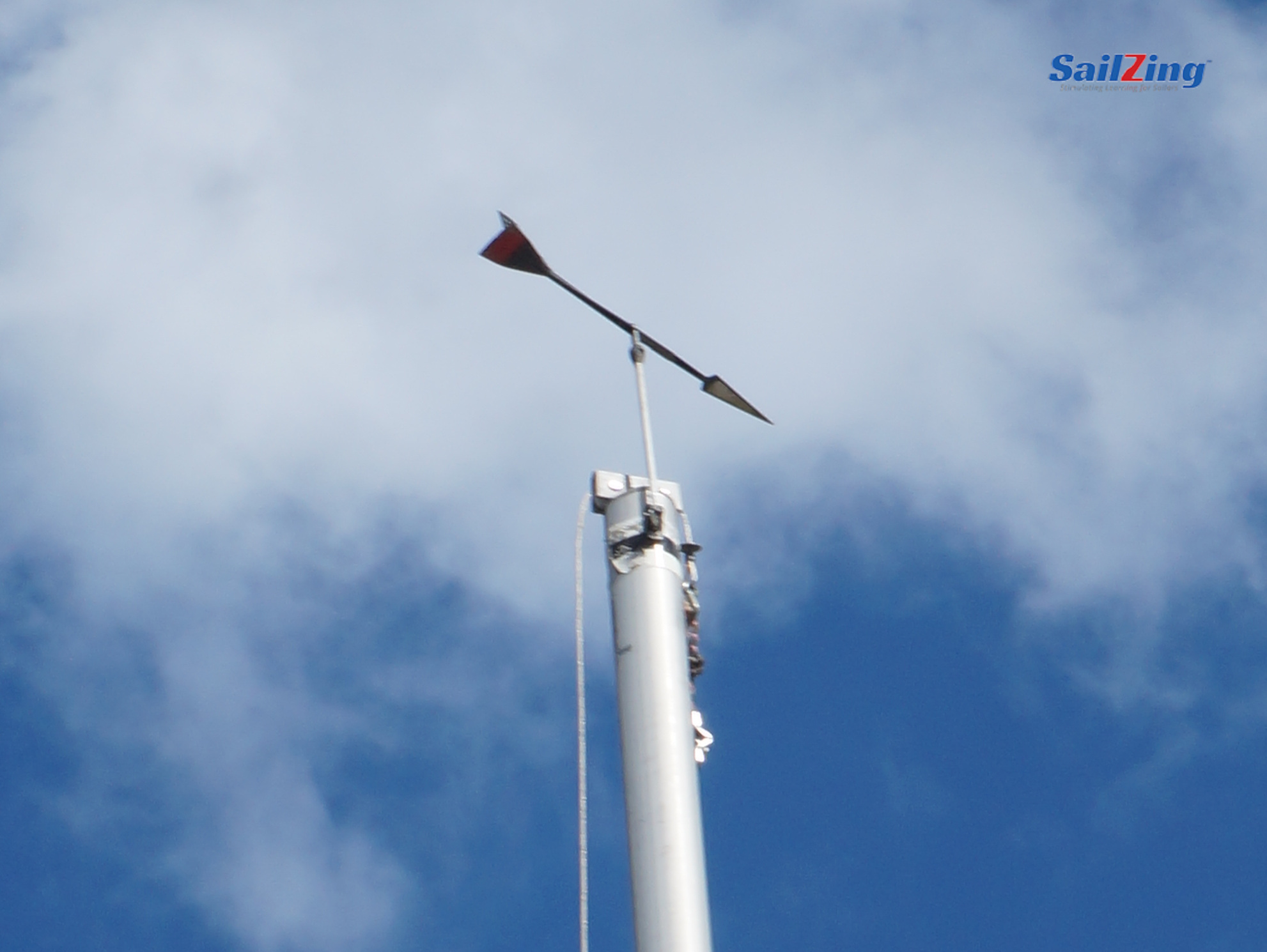
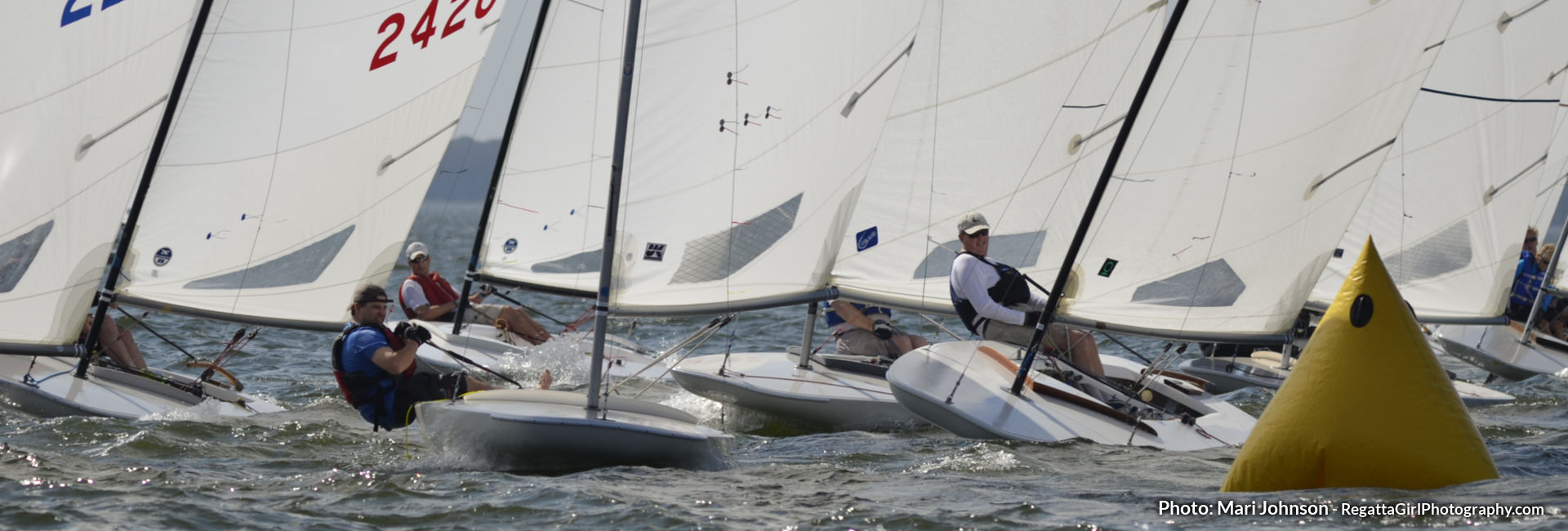



I firmly fall into the category of every boat (except mine) should have a masthead wind indicator. I love seeing the wind direction on my competitor’s boats!
Thanks, JP!